Glenoaks Cutoff
There was an interesting alternative proposal to the Weldon Canyon cutoff. In 1927, a plan was set forth that would run a new Glenoaks Boulevard (replacing the existing Remsen Street) on a line east of and parallel to San Fernando Road and then through a tunnel or a cut in the mountains east of the Newhall Tunnel where it would eventually join San Fernando Road at the current intersection of Sierra Highway and Remsen Street (LA Times 8/8/1927).
The LA Times reported (4/15/1928) that the road "could be carried over the mountains at the upper end of the valley over a grade that would not exceed 6 per cent, and except for one point, a short distance north of the Newhall tunnel, where a switch-back would be necessary, the route would be a high-speed road along its entire distance." It was also suggested that both the Glenoaks and the Weldon Canyon cutoffs could be built with both roads helping to relieve the traffic through the Newhall tunnel (LA Times 7/15/1928). The Glenoaks cutoff (also called the Remsen cutoff) route was surveyed by the County Surveyor's office and gained support from many notables in the Newhall-Saugus area (including A.B. Perkins) and County Supervisor Henry W. Wright. This route would open up the northern part of the San Fernando Valley to growth (Signal 7/26/1928).
The State Highway Commission decided that the Weldon Canyon route was the most practicable and the least expensive of the alternatives. The contract for the work was signed in December of 1928 with work starting by December 27th (Signal 12/28/1928). The Glenoaks cutoff idea was still touted by some, but it was basically dead.
Today, the only evidence of this proposal appears to be the short Remsen Street at Sierra Highway just south of the Eternal Valley Cemetery. It was probably given that name because of the county survey for the cutoff road. There is no other logical reason for calling that section of the road Remsen.
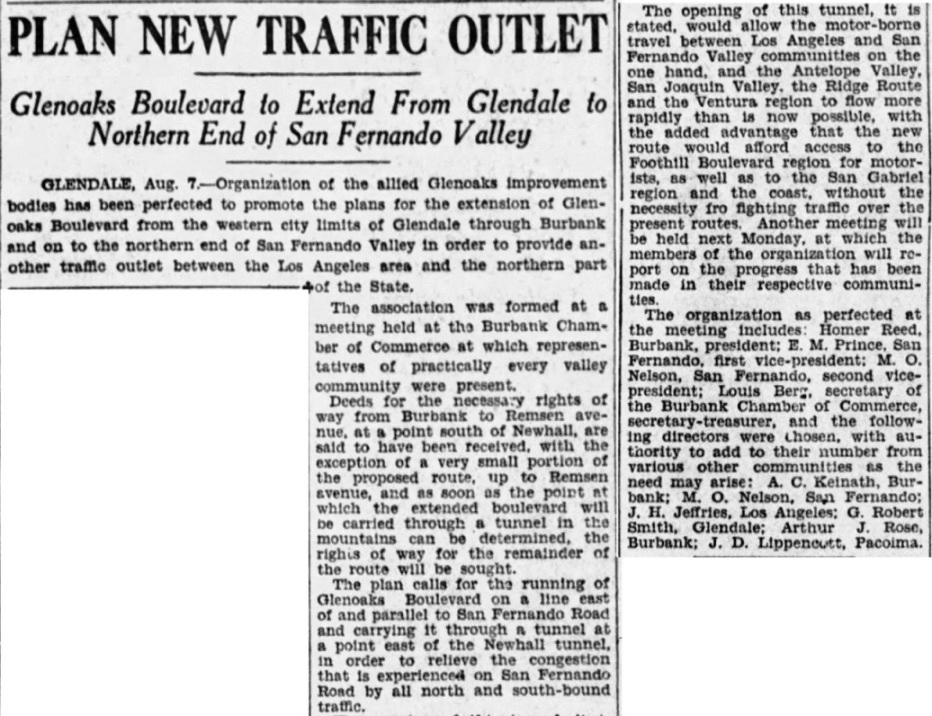
Los Angeles Times, August 8, 1927
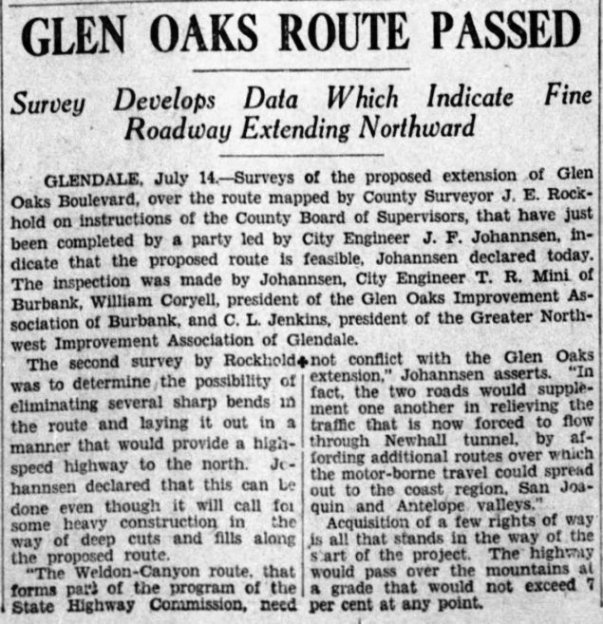
Los Angeles Times, July 15, 1928
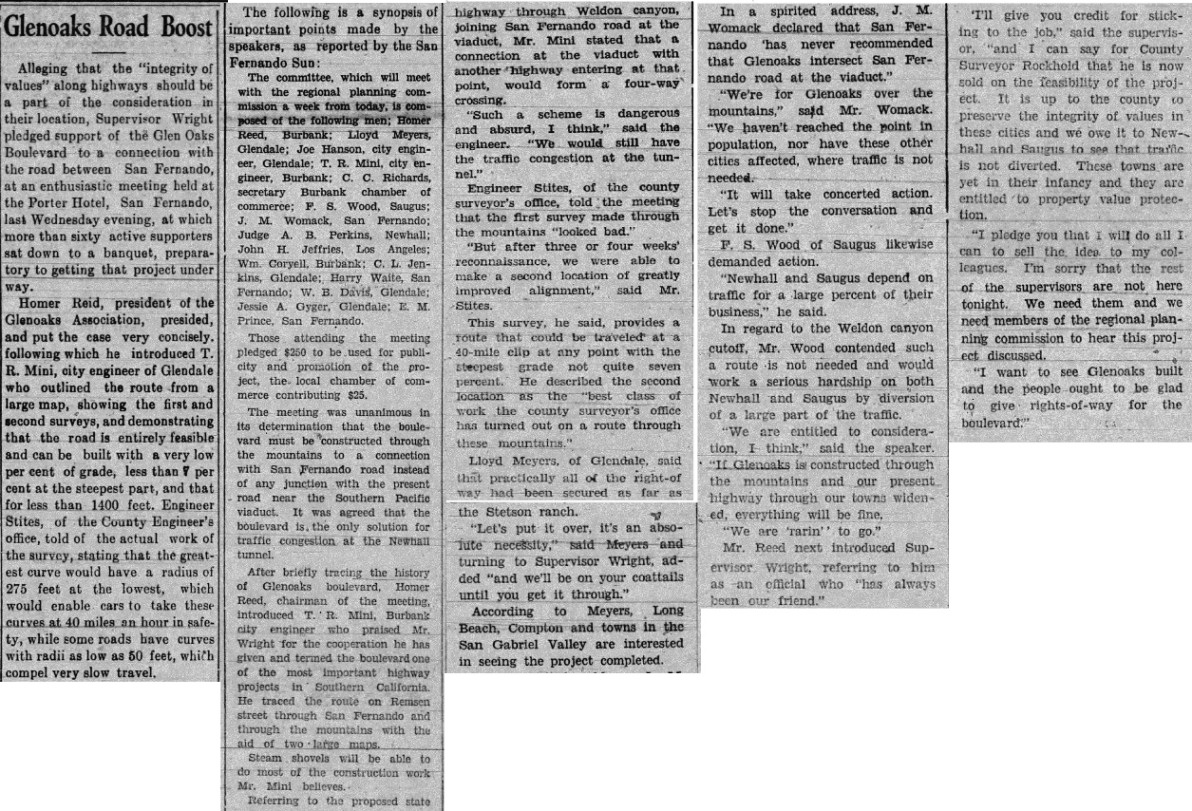
Newhall Signal, July 26, 1928
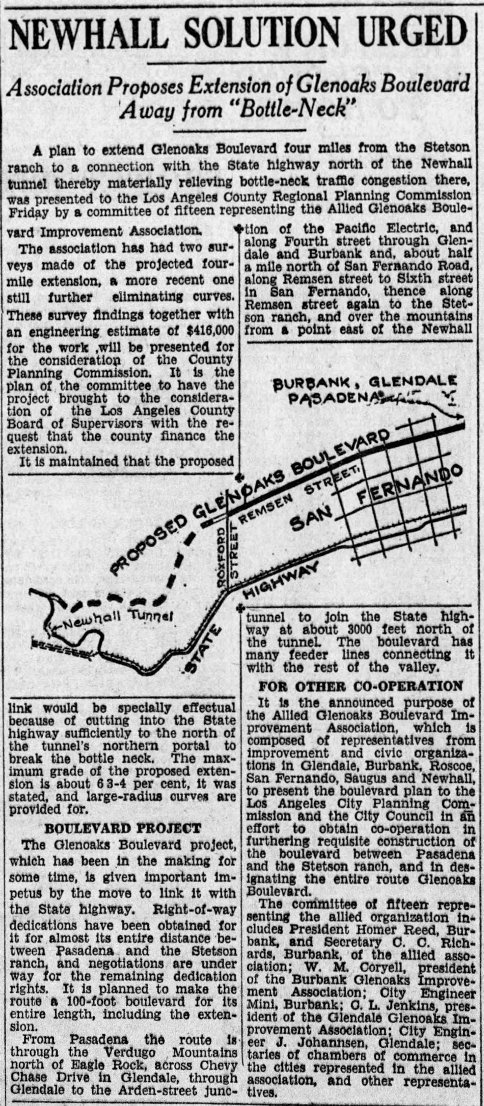
Los Angeles Times, August 5, 1928

Newhall Signal, December 13, 1928
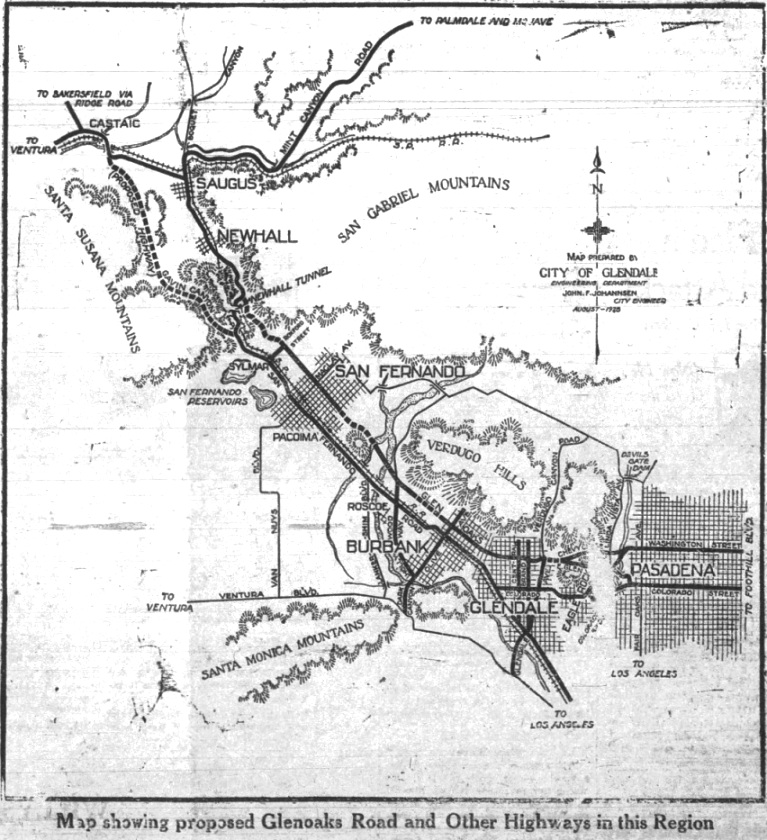
Newhall Signal, January 10, 1929
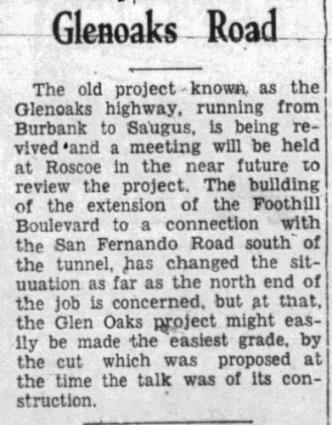
Newhall Signal, September 26, 1935. Idea revived in 1935, but nothing ever happened.







